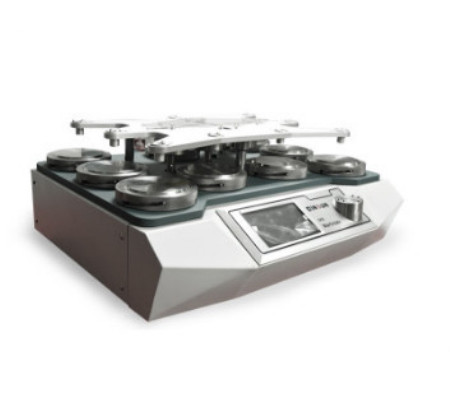
NewsInformation Center
Factors Affecting the Results of Martindale Abrasion Testing
2023/07/05
Martindale Abrasion Testing is a common test method used to evaluate the abrasion resistance of fabrics. The accuracy and reliability of the test results are influenced by a number of factors.

The following are some of the important factors that affect the results of Martindale Abrasion Testing:
1. Test parameters:
Test parameters include load, test speed, test time and number of cycles. The selection of these parameters should be determined by the purpose of the test, the type of fabric and the relevant standards. Different test parameters can lead to different wear results, so consistency in test parameters should be ensured when making comparisons and evaluations.
2. Fabric structure and fiber type:
The structure and fiber type of the fabric have an important influence on its wear resistance. Different fabric structures (e.g. plain, twill, satin, etc.) and fiber types (e.g. cotton, polyester, nylon, etc.) have different wear characteristics. Therefore, when comparing the wear properties between different fabrics, samples with similar structures and fiber types should be selected as much as possible.
3. Fabric treatment and finishing:
The treatment and finishing process of fabrics (such as dyeing, coating, water repellent treatment, etc.) can change their surface properties and abrasion resistance. For example, certain treatments may increase the abrasion resistance of a fabric, while other treatments may decrease its abrasion resistance. Therefore, the treatment and finishing history of the fabric should be understood and documented before Martindale Abrasion Testing is performed.
4. Environmental Conditions:
Factors such as humidity, temperature and air quality of the test environment can also have an impact on the test results. For example, changes in humidity and temperature may result in changes in the physical properties of the fabric, which may affect the wear results. To ensure comparable results, tests should be conducted under standardized environmental conditions and environmental parameters should be recorded.
5. Sample size and shape:
The size and shape of the sample also has an effect on the test results. Smaller samples may result in more concentrated wear, while larger samples may result in more uniform wear. In addition, the shape of the sample (e.g., round, square, etc.) may also affect the wear results. To minimize the effect of these factors, the appropriate sample size and shape should be selected and tested multiple times in different locations.

6. Human factors:
Human factors in the testing process may also have an impact on the results. For example, the skill level of the test operator, the way and force of the applied load, the tightness of the sample fixation, etc. To reduce the influence of human factors, training should be provided on the test operation and to ensure consistency and accuracy of operation.
7. Instrument calibration and maintenance:
Calibration and maintenance of the test instrument is critical to the accuracy and reliability of the results. Regularly calibrate the test instruments to ensure their stable performance and accuracy. Also, regularly maintain and service test instruments to ensure their proper operation and accurate testing.
In summary, understanding and controlling these factors is critical to obtaining accurate and reliable Martindale Abrasion Testing results. When performing comparisons and evaluations, these factors should be kept as consistent as possible, and test conditions and associated factors should be documented and reported for repeatability and comparability of results.
Previous: How to recommend a specific aging test chamber based on testing needs?
N e x t : Can you recommend any resources for learning more about oxygen index testing?




